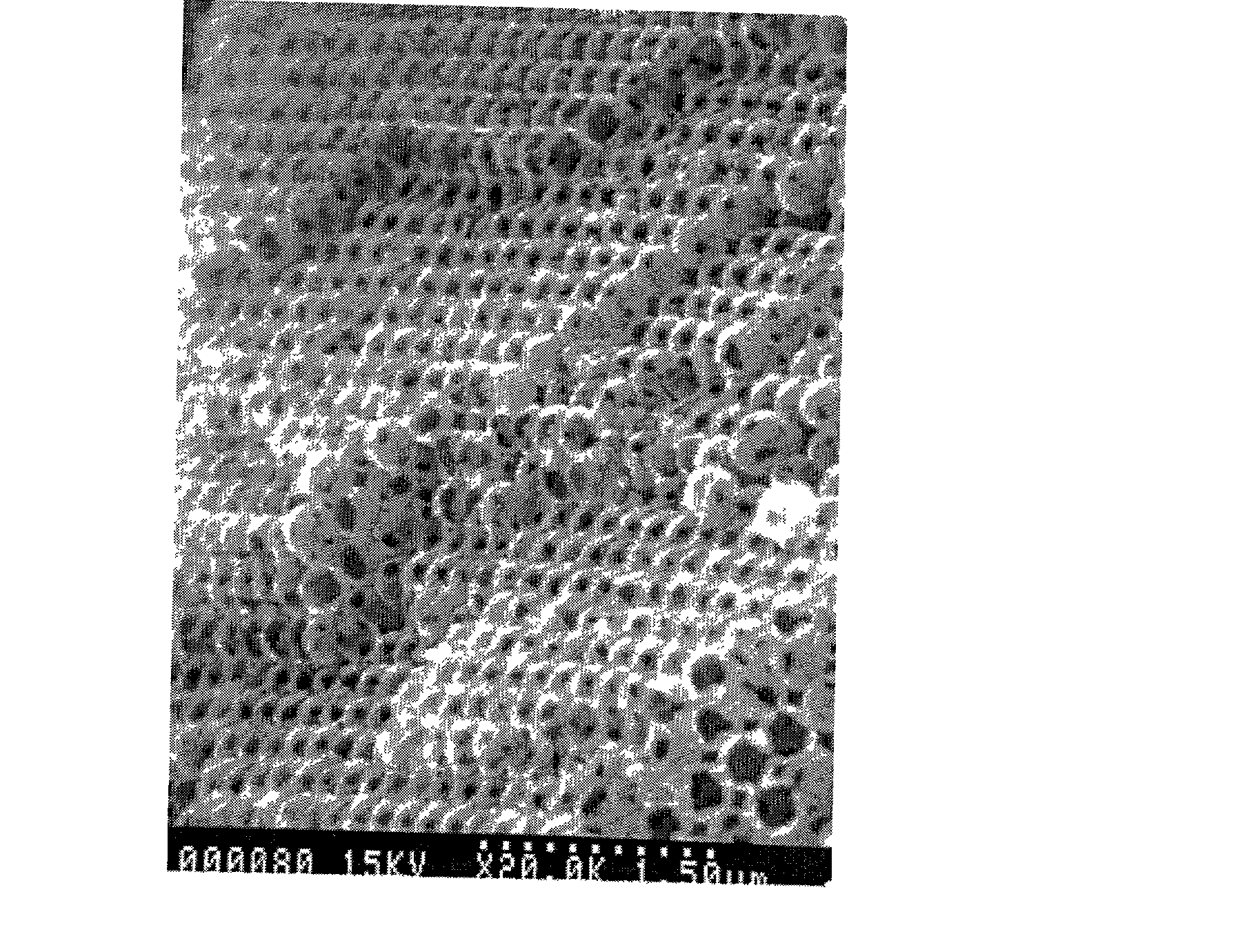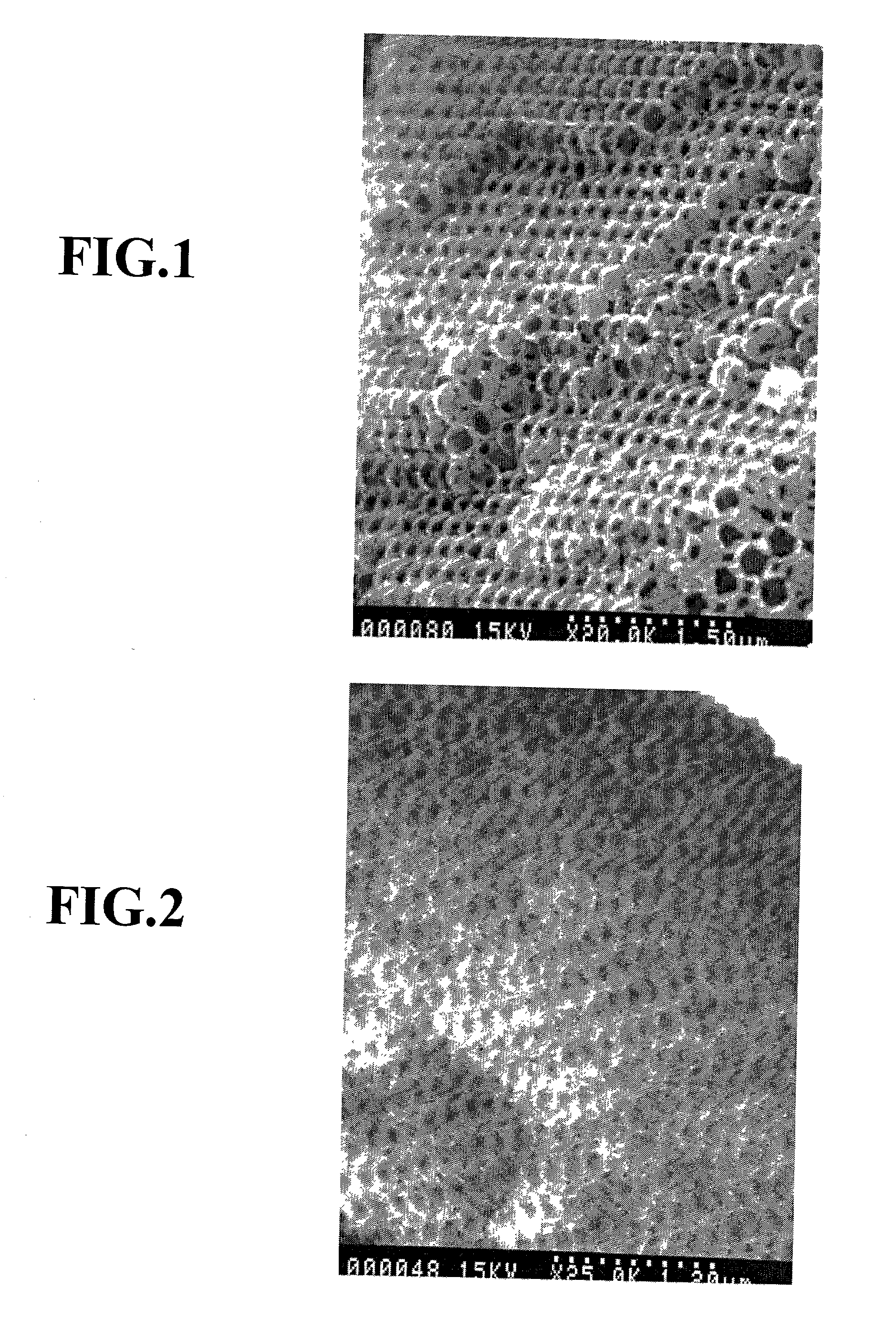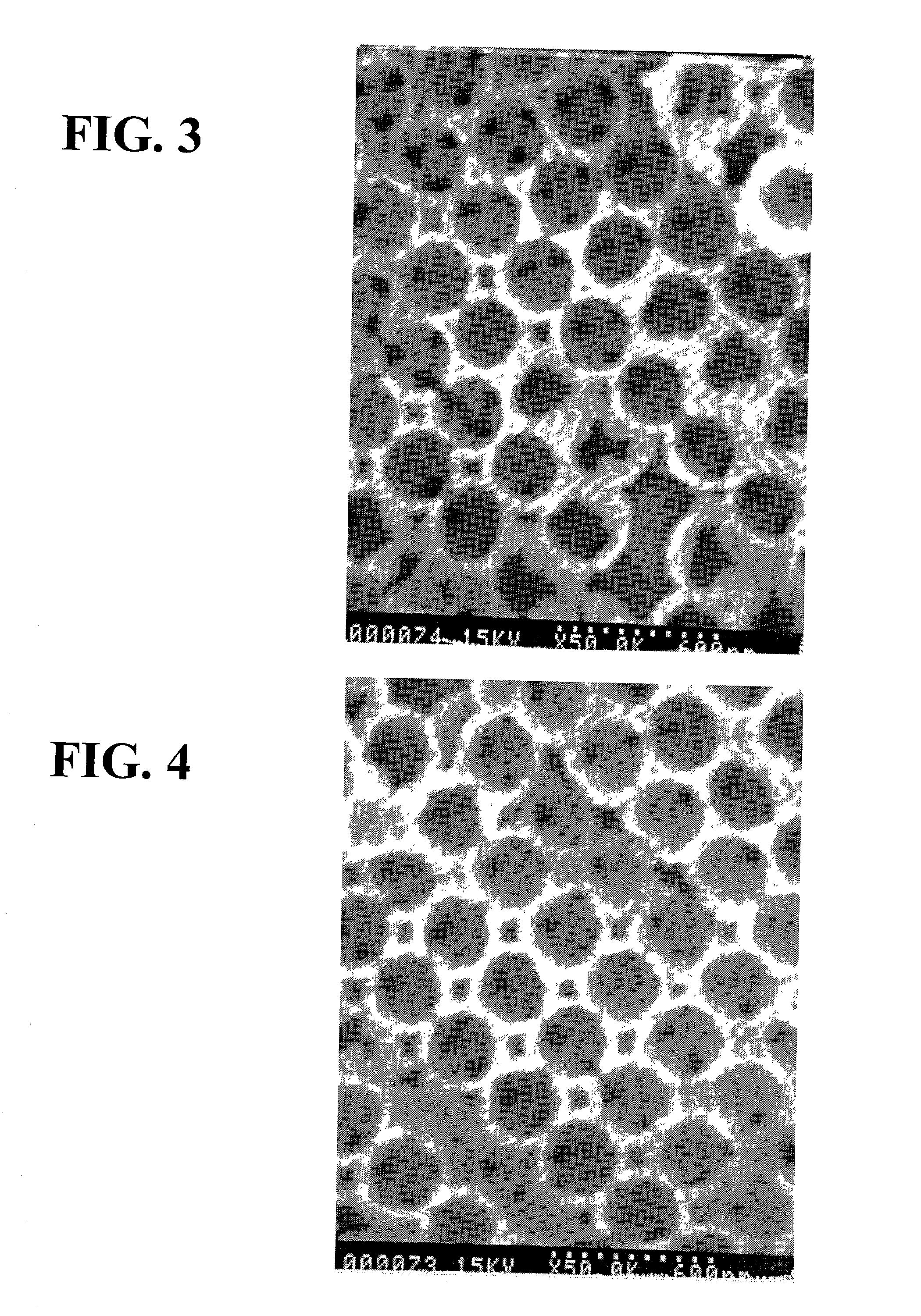Light emitting photonic crystals
a light-emitting, crystal-type technology, applied in the field of photonic crystals, can solve the problems of reduced photoluminescence intensity, non-uniform pore size distribution, limited active surface area, etc., and achieve the effects of enhancing the emitted light or even lasing, enhancing the emitted light, and increasing the intensity of the emitted ligh
- Summary
- Abstract
- Description
- Claims
- Application Information
AI Technical Summary
Benefits of technology
Problems solved by technology
Method used
Image
Examples
example 2
[0054] Production of Micropores. A monolayer of spheres is formed by loading a concave glass cell with a dilute silica suspension (.about.1 wt. % solids). After drying, this procedure is repeated several times with the same amount of dilute silica suspension to obtain an ordered film at the center of the cell comprising about 20 layers of silicon spheres. The spheres are sintered by heating a 650.degree. C. for five hours causing an attaching of adjacent spheres to one another by an intermediate neck thus forming a sintered porous opal. A sample of this opal is placed into the CVD chamber and evacuated to 10.sup.-3 mtorr. A precursor gas composed of 97% nitrogen and 3% silane (SiH.sub.4) is introduced into the CVD chamber. This precursor gas is delivered at a rate of 100 sccm per minute in order to maintain the pressure 400 mtorr. The temperature is maintained at 500.degree. C. and held at this temperature for 36 hours. Examination of the surface of this opal sheet shows that the si...
example 4
[0055] A photonic crystal having randomly nanoporous surface porosity is prepared by etching the microporous structure obtained from Example 1 with a 1:5:10 (by volume) or 4:1:5 (by volume) mixture of: HF (49%): HNO.sub.3 (70%): H.sub.2O (deionized). The first step in the process of creating nanoporosity involves the cleaning of the microporous sample by ultrasonication in pure ethanol. The chemical etching itself is done at room temperature (25.degree. C.) for 5-15 minutes. After the completion of the chemical etching, the sample is rinsed in deionized water for about 5 minutes and dried using pure nitrogen. The samples are then inspected under the photoluminescence test equipment. The photoluminescence testing involves illuminating the photonic crystal sample (that now has micro and random porosity) with light of 365 nm wavelength, using an UV lamp. During the illumination process the samples are viewed under a microscope. A bright red color (corresponding to photoluminescence) is...
example 5
[0056] A photonic crystal having randomly nanoporous surface porosity is prepared by etching the microporous structure obtained from Example 2 with HF vapor until randomly nanoporous surface porosity is obtained, which nanopores having an average pore diameter less than about 10 nm.
PUM
| Property | Measurement | Unit |
|---|---|---|
| Pore size | aaaaa | aaaaa |
| Thickness | aaaaa | aaaaa |
| Thickness | aaaaa | aaaaa |
Abstract
Description
Claims
Application Information
 Login to View More
Login to View More - R&D
- Intellectual Property
- Life Sciences
- Materials
- Tech Scout
- Unparalleled Data Quality
- Higher Quality Content
- 60% Fewer Hallucinations
Browse by: Latest US Patents, China's latest patents, Technical Efficacy Thesaurus, Application Domain, Technology Topic, Popular Technical Reports.
© 2025 PatSnap. All rights reserved.Legal|Privacy policy|Modern Slavery Act Transparency Statement|Sitemap|About US| Contact US: help@patsnap.com



